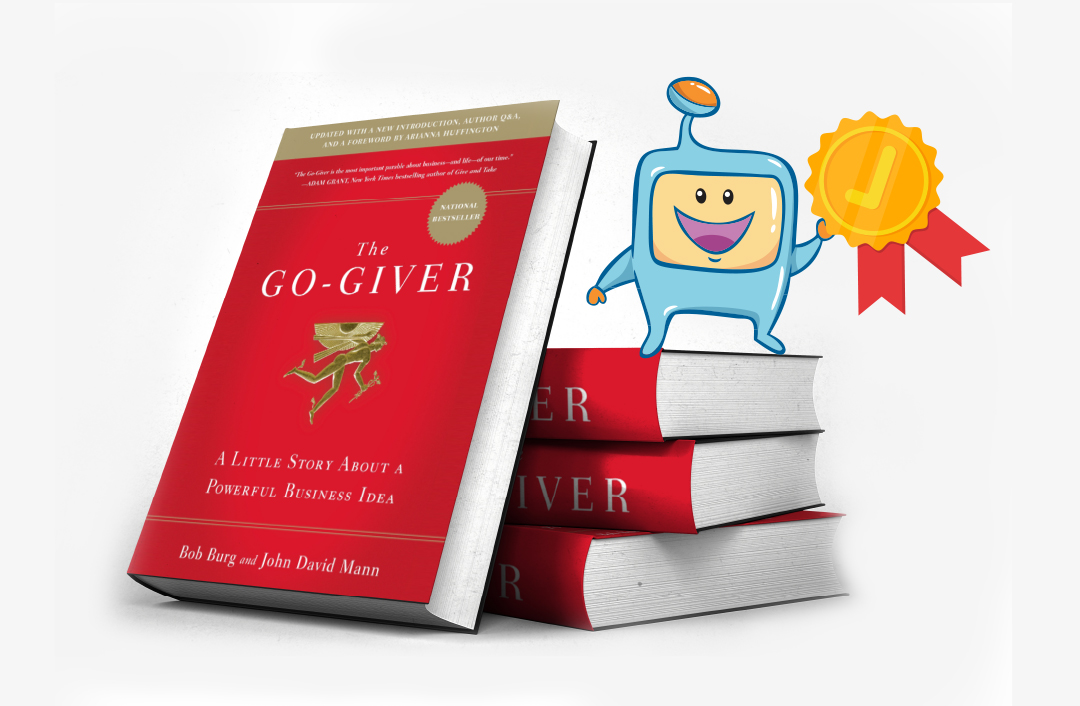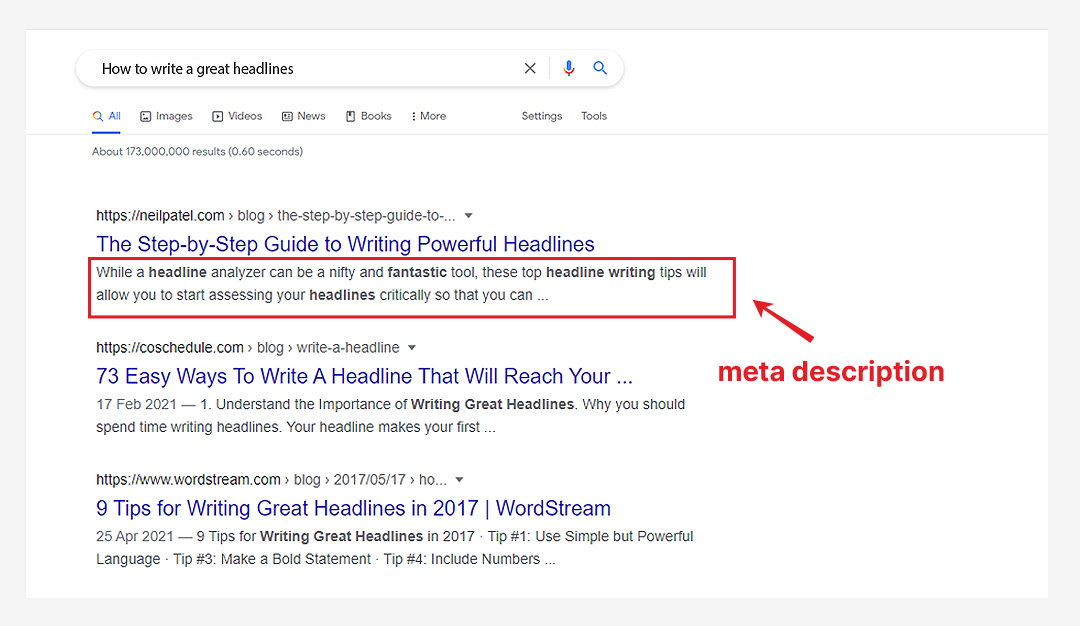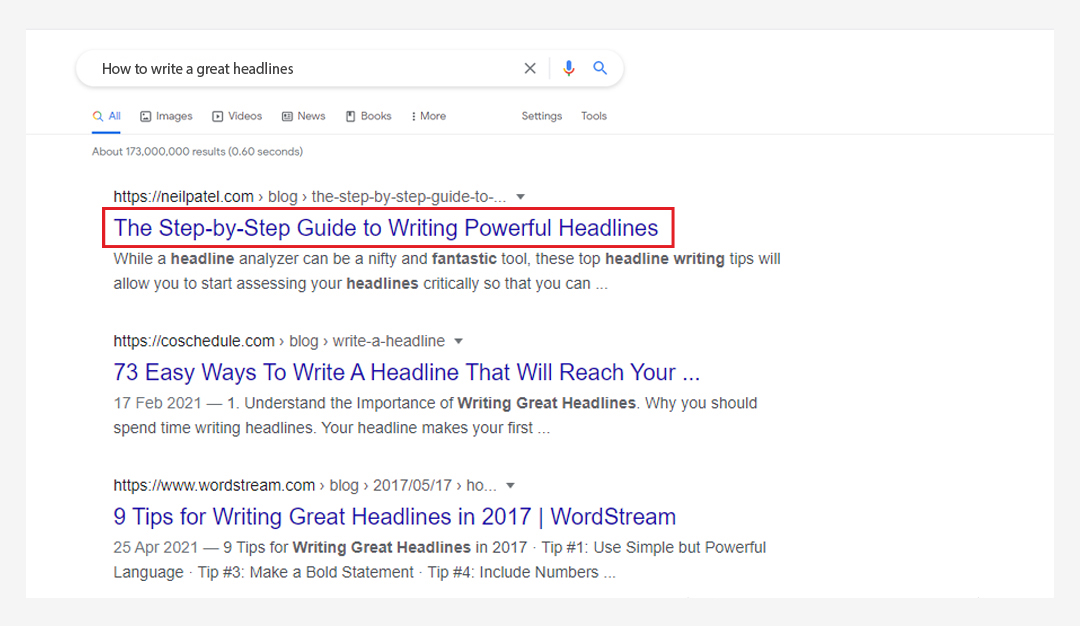
Why settle for good, when you can aim for great…or even better? In this article, you’ll learn the principles on how to write a blog post that offers value to your reader. When you start writing a good blog post you want to grab the reader’s attention. You want them to walk away with having learned something of value.
Learning how to write a blog post is much easier if you’re aware of these 9 principles. #9 is especially crucial when writing the perfect blog post.
Imagine hearing (or in our case, reading) the words “Thanks, that was a great piece of content and it’s very helpful. This is exactly what I was looking for.” That’s the reward that comes from doing something beneficial for someone — in this case, writing a good blog post.
To begin, I want to give you a short description of each of the 9 principles that guide the writing of a perfect blog post. We’ll start with how to write a blog post. Then, I’ll dive into each blog content principles in more detail.
The hardest part of writing blog posts is coming up with topics or new ideas consistently. This section will cover tips for bloggers on how to write a blog post AND gain search traffic.
There are two traps writers tend to get hung up in:
Inexperienced writers rely on their brains and their own abilities to create content. Sometimes that works, but eventually, you run out of ideas of what to write.
Another thing writers overlook in digital marketing is focusing on the topics and ideas that they want to write about.
Sure, there are some great SEO tools out there that will help you create popular posts.
Beyond search engine optimization, there are some fundamental blog post principles that you don’t need a tool to start using.
The post title is important for ranking purposes. Adding your desired search term into the title is what Google uses as a ranking signal. Using your target keyword in your title is a strong ranking factor.
But the page title is not all about ranking. It also tells the reader what they will learn by reading your article.
I can write a whole article (or more) on this. It’s that important.
I think that the simplest advice I can give is to remind you that your reader has a reason for coming to your post.
Where are they now in their current level of understanding?
Where do they want to go?
Don’t just write for word count, write for your reader’s success and hit publish!
How do you think they’ll arrive at your blog post? Will they find it while doing a Google search? On your FB group? Both?
If you want to be found in the search engine results pages, you’ll have to know the search intent of someone who types a search query into a search engine.
So, what would someone type into Google (or Bing, Yahoo, Yandex, DuckDuckGo, etc.) to find your blog post?
What state of mind are they in?
For the appropriate industries, knowing the demographics and psychographics of your market can be key in knowing which issues affect them.
Tip: The definition of Psychographics is the study and classification of people according to their attitudes, aspirations, and other psychological criteria, especially in market research.

What you’re now reading is partially the result of my effort to try to understand something about you – of course, that you’re someone who not just wants to write a blog post, but go above and beyond.
This one is easy to explain: people search for content because they want information from someone who has a certain level of know-how, insight, or expertise.
Not that you have to be a subject matter expert on your topic, but the person who creates the content should be more knowledgeable than the reader.
Readers may not have time to do all the research they need to do, which is why they may come to someone who has already done it.
Tip: When you are writing a blog post and introducing new information, make use of bullet points. Bullet points will help break up information in an easy to digest way.
This brings us to our next point…

People can read something and have a feeling as to how much research went into it. Links, footers, and citations are good indications of the effort that’s gone into a piece of writing.
People appreciate that.
This sort of goes hand-in-hand with the previous principle. Even if you have expertise in a certain subject, it’s always good to verify what you know, and/or be sure that your knowledge is up to date.
Research can be as extensive as finding out the consumer demographics and psychographics of your market. It may involve creating a customer profile.
It may involve watching several YouTube videos and interviewing your satisfied customers.
Keyword research, while it might not directly help with the writing of the post, can surely help you discover the topic you might write on.
Depending on your topic and argument, not only will you have to do research, but some readers will want to see your research. These readers may like graphs, pie charts, stats, citations, and embedded how-to videos.
Of course, maybe not every single blog post will require this depth of research, but the option is there.
Regardless, knowing about your reader’s needs, and doing research to fulfil those needs brings us to our next principle…

Do what your headline implies…and go further. Don’t just write a great headline and then disappoint in the article.
One of the best business books I’ve ever read is a parable called The Go-Giver. If I could summarize it’s message, I’d say give value. That’s the essence of it’s message.
Over deliver.
There are many ways to give value. There is a list below, but of course, there may be many other ways to provide value. (To try to list them all would be quite a task, because I don’t know your business model.)
What I will advise is to try to think beyond the blog post, and make this principle (giving value) a cornerstone of your business.
Follow these 8 principles listed here:
Tip: Make sure to notify your subscribers and email lists when you have published a new blog post. You become a go to source when you keep your readers interested.
Your headline should be clear on its promise.
People don’t have time to waste. Be sure that you know exactly what your blog post offers, and try to create a succinct statement about that.

The “succinct” statement I’m talking about is what’s known as a meta description, which is the descriptive text of a search engine result. (It’s been recommended that your meta description be no more than 120 characters.)
Make sure your headline (which should be up to 50-60 characters long for search listings) unambiguously states your (implied) promise.
For most blogging platforms, how to post an article is the same for most WordPress sites. It becomes the blue clickable text when that post is shown on a search results page.
Tip: In your WordPress dashboard, go to Settings > Permalinks and make sure the permalinks are set to post name. Example: https://seointel.com/sample-post/ Your title and your blog post URL will then match.
Writing headlines takes a bit of market research. By searching a keyword and comparing the top 10 results, you’ll know both what Google and your reader wants.
If you use good old common sense, insight, and keyword research, you’ll craft the perfect page title.
Think specificity: do you service a certain geographic area? What about a certain model of car or equipment? Size? Being specific in a meaningful way can make the difference between a searcher coming to your site vs going to another site.
Plainly state your offer in the headline (your post’s title), and try to do it in 60 characters or less.
People like how-tos, steps, tips, lists, and deadlines, so add those if you can.
If, at first, you don’t feel that you have a good headline, write your blog post first, and then you might have a better idea of how your headline should be worded.
Here’s a pet peeve of mine: clickbait. Avoid using clickbait or otherwise having a misleading headline. Clickbait is a term used to describe a headline that’s worded in such a way that it entices people to click (it baits clicks) but then, the people who click find that what they clicked on doesn’t lead to what was promised.
Of course, when you make a promise you then have to…

Simple, but so important. People don’t have time to waste.
This is the natural progression of making a promise: make sure you fulfill it (without diverting too much).
I know it might seem redundant to dedicate a whole principle on the importance of fulfilling your promise, but I do so to emphasize that you don’t want to disappoint your reader.
This is someone who’s taking time out of their day to read (or watch or listen) to what you have to say, in the hopes that you’ll give them what they’re looking for. (Or, if you can’t give them what they’re looking for, at least give them some sort of answer.)

How good did you feel when you went looking for something (watched a how-to, listened to an interview, or read a blog post), and discovered something above and beyond what you were originally looking for?
Depending on your topic and the subject matter, it may be possible to not just fulfill the promise of your headline, but also to elevate your reader’s understanding of your topic.
There are probably numerous ways to do this, but I think the highest example of this is to give your reader a paradigm shift.
Now, depending on the topic of your post, you might feel a bit stretched at the thought of shifting your reader’s paradigm, but hey…writing a great blog post is not always easy! Aim high.
At the very least, try to take them one step further than what they came for.
You want them to think, Wow. That was really good. I even learned something I didn’t know or wasn’t aware of.

I was surprised when I first learned the average reading level of most Americans.
I know what you’re thinking: Well, of course my post needs to be readable.
Hear me out, because this may come as a surprise: it’s been said the reading level of most American adults is…wait for it…6th to 9th grade.
Nope, it’s not even at an upper-secondary level. I mean elementary to junior high level.
Of course, that is if you’re writing to a general audience.
But what if you’re writing within a specialized industry?
Of course, your approach will differ whether you’re writing a technical white paper or a short story. However, since we’re talking about blog posts, I’d personally make my writing approachable by the general public, while still using industry terms so that those in my audience will feel a sense of familiarity.
The Flesch–Kincaid readability tests are designed to indicate the difficulty level of a piece of writing. It’s probably the most widely used approach for this.
A simple Google search will reveal that there are a number of online Flesch–Kincaid readability tests.
Here’s one I found from WebFX.com It uses a number of readability indicators, such as the Flesch Kincaid Reading Ease, the Flesch Kincaid Grade Level, and among a few others, the Gunning Fog Score. It will give an impress output with a short or lengthy post.
Tools may differ in how you use them, but regardless, using the tool should be pretty simple: enter your text (or a publicly-accessible URL), and submit.
The tool will display a score, and may offer suggestions on making your piece more readable.

You don’t win…until the end.
This is something many bloggers overlook.
You’ve done your research, you’re confident in your knowledge, you’ve made a promise and you’ve overdelivered.
What next?
Well, you wouldn’t want that time to go to waste. You wouldn’t want to excite your reader only to…lose them.
That’s why, when you’re writing your blog post, you keep this idea in mind: hold their attention.
In fact, if I could boil this down into 3 things your post has to do, they’d be:
Yes, it’s obvious, but I mention it because your blog post needs to flow in such a way that the reader is curious to know more.
With that last point in mind, now would be a good part for…

Keyword research can (at least partially) reveal the psychographics and demographics (numbers) of a market (your audience).
The search intent is reflected in the search queries (keywords) that people type into a search engine.
Most good keyword research tools have a volume/month metric. That is, they display an estimated number (volume) of searches per month for a given keyword phrase. This number (volume/month) is indicative of demographics.
(I should note that the fields of psychographics and demographics are much more broad than what I’ve portrayed here, but in terms of keyword research, what I’ve portrayed is a good starting point.)
Every marketer has their go to list of tools they use. Tools can make your writing be popular content so much easier.
Here’s a brief summary of what I mentioned above:
You’ve got the basics of the on page SEO part of writing a blog post, now let’s delve into the human interest
Here’s something I learned from a high-priced, direct-response copywriting course: there’s a nearly unbeatable combination of factors that can make a certain promise nearly irresistible. That combo is curiosity and self-interest.
Of course, your reader will want to read your post due to their self-interest. But…if you can intrigue them…maybe have a curiosity-generating title that says “3 Mistakes You Don’t Know You’re Making,” or stimulate cognitive dissonance, searchers may, at the very least, consider your post.
Use what are called open loops to spark curiosity…and don’t close the loop until the reader has read your post.
If you recall, when I first introduced Principle #9, I gave it a title that, unlike the other principles, didn’t really state what it was. It was titled, If All The Other 8 Principles Are Met, Then #9 Can Assure That You Have A Winning Blog Post
That was me starting an open loop (or…at least it was an attempt to).
If a loop is something that’s closed or complete, then an open loop is a loop that’s open or incomplete.
It’s like an urge of curiosity that hasn’t been fulfilled. (In fact, that’s almost exactly what it is.)
An open loop is akin to saying, “I’m going to tell you this secret that you want to know, but first…”
The idea is that, by stating that “I’m going to X,” (X being something the reader is very interested in), you’ve opened a loop (made a promise), and that promise remains in the air until you’ve delivered on it. If the reader is very interested in what you have to say, they’ll continue to read until you’ve closed the loop.
In short, the understanding is that the reader will hopefully continue to read, in the hope that they’ll find out the most important tidbit they came for.
That said, here’s a warning: I’d caution against using this as a gimmick. A good way to ensure that the open loop is used in a non-coercive way is to basically say, “I’m going to tell you what you came here for, but first, I need to explain the foundation.”
Be careful not to promise readers something you won’t deliver to them. Avoid clickbait for the sake of getting clicks. Always write as if your visitors are your most loyal readers.
That’s what I did with the 7 principles that precede the 8th one: If any of the first 7 are absent, there’s practically no use for the 8th one.
Did I succeed at that?
You be the judge.
Do this correctly and you can gain more traffic. Create vague headlines without a clickable appeal and you will be missing clicks you should have.

You can hold interest by sequencing your points in a way that they logically build upon each other, walking the reader down the path to the promise you’ve implied.
A lot of people may dismiss this, but don’t take for granted that your reader may not have a sequential understanding of your topic. That is, they may not know in the step-by-step way that you might.
That’s why it’s important to really think as though you were someone new to your topic, and go write in a logical fashion. Otherwise, if you have a knowledge gap somewhere (for example, you go from A to C instead of A to B), they might become confused, and you’ll lose them.
You’ve probably heard this, but I’ll state it here: avoid walls of text. Large blocks of text are off-putting to the eye and can drain someone’s attention. Smaller paragraphs are more inviting.
Complimentary images help give eye relief, as well as offer data in a visual format, which can help anyone who’s a visual learner.
Having a quiz or some sort of interactive element can help keep your reader engaged. I imagine that your reader would be more engaged if you had a quiz that reveals something about them, followed by a section explaining their score.
Think about the skimmers. There are a lot of people (such as those on a mobile device) who might quickly skim through a post before deciding whether they’ll give it the time of a full read-through.
You want your post structured in such a way that there are inviting sub-heads, boldings, and images where appropriate. That way, even if they don’t have time to read word-for-word, they’ll at least have gotten something for their time.
Have an element of interactivity. Quizzes are one way to do this.
Allow for comments. This depends on how your blog is set up, but having a section where readers can share their thoughts can keep readers around longer.

Of course, you may wish to consider having an editor look over your content before publishing. I don’t just mean proofreading, but editing.
If you’re an American writer who’s writing for an English audience, be sure to use the English spelling.
Know which keyword phrases your article is aiming for, but don’t use all those phrases mindlessly. Use keyword phrases in a way that makes sense.
Before I actually write, I usually outline my posts. Outlining is great because it removes the stress of having to write a publish-worthy post on your first attempt. Outlines are also great because if you write a good one, you can give it to another writer and ask them to do the actual writing.
There are online spell-checking and grammar-checking services. Grammarly is one that comes to mind. I like Grammarly for a few reasons, one of which is that it comes in the form of a Chrome extension.
One content marketing tactic is to create a step by step guide for your blog. This is where your keyword research in the search engines comes in. Look to see if your competitors are offering a step by step guide on your topic.
Relevant images are important. There is a sneaky (and whitehat) way to add more keyword relevance to your page. Like your title, you want your featured image to invite clicks. Make your image inspire clicks.
Make sure you have relevant images. If your blog is about dogs, don’t have an image of a fish in a bowl unless your blog post is on dogs and goldfish.
It is absolutely essential to double check for grammatical errors. If you have an error in the first few sentences of your post, you may have lost some credibility in the eyes of your reader. Before you click publish, make sure you have a perfect post, free of errors.
